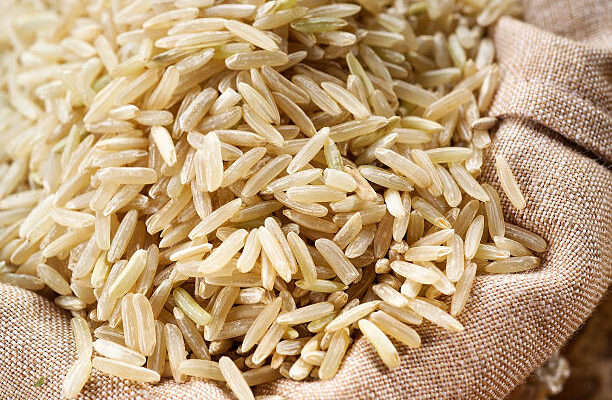India’s packaged rice market has witnessed substantial growth driven by convenience, quality assurance, standardization, branding, marketing, and innovation.
According to TechSci Research report, “India Packaged Rice Market – Industry Size, Share, Trends, Competition Forecast & Opportunities, 2029”, the India Packaged Rice Market stood at USD11.9 billion in 2023 and is anticipated to grow with a CAGR of 5.5% in the forecast period, 2025-2029. The packaged rice market in India has undergone a remarkable evolution, transforming from a traditional commodity into a dynamic and thriving industry.
Rice has been a dietary staple in India for millennia, with its cultivation dating back thousands of years. Traditionally, rice was purchased in loose, unprocessed forms from local markets. However, with changing consumer lifestyles, urbanization, and the emergence of modern retail, the concept of packaged rice began to gain traction.
The journey of packaged rice in India can be traced back to the mid-20th century when pioneering brands like India Gate introduced the concept of branded and packaged rice to the Indian market. These early efforts laid the foundation for what would eventually become a booming industry.
Rapid urbanization and the growing middle-class population have led to changing consumer lifestyles. Urban dwellers often have busier schedules and demand convenient and easy-to-cook options. Packaged rice products, such as ready-to-cook rice and flavored rice mixes, cater to these demands.
The advent of modern retail outlets, including supermarkets, hypermarkets, and online grocery platforms, has significantly enhanced the accessibility of packaged rice products. Consumers can now choose from a wide variety of rice brands, grain types, and packaging sizes.
Browse over XX market data Figures spread through 83 Pages and an in-depth TOC on “India Packaged Rice Market”
https://www.techsciresearch.com/report/india-packaged-rice-market/3744.html
Packaged rice offers consumers the assurance of consistent quality, cleanliness, and hygiene. This is particularly important in a country where rice is a dietary staple, and consumers value the quality of the grains they consume.
Government initiatives aimed at promoting food processing and modernizing the retail infrastructure have created an enabling environment for the growth of the packaged rice market. These policies encourage investments in the food processing industry, ensuring a steady supply of high-quality packaged rice products.
The market has witnessed a proliferation of rice variants and flavors. Brands have introduced innovative packaging and seasoning options to cater to diverse consumer preferences. From fragrant Basmati rice to spicy masala-flavored rice, the variety is extensive.
Health-conscious consumers are seeking rice products that align with their dietary preferences. Brands have responded by offering options like brown rice, organic rice, and parboiled rice, which are perceived as healthier choices.
Consumers often choose packaging sizes that suit their household needs, whether it’s small packs for daily use or larger quantities for occasional consumption. Ready-to-cook rice and flavored rice mixes are favored for their convenience.
Different regions of India have distinct preferences for rice varieties. While Basmati rice is popular in the North, regions in the South prefer varieties like Sona Masuri and Ponni rice. Brands tailor their offerings to cater to these regional preferences.
Health-conscious consumers are increasingly looking for rice products that offer nutritional benefits. Brown rice, which retains the bran layer and is higher in fiber and nutrients, has gained traction among health-focused consumers.
The market has seen a surge in flavored rice options, including biryani rice, pulao rice, and masala rice. Consumers appreciate the convenience and variety of these flavored offerings.
A segment of consumers seeks organic rice options that are grown using sustainable and environmentally friendly practices. Brands that emphasize these qualities have garnered a dedicated following.
Gourmet rice varieties, such as black rice and wild rice, have gained popularity among consumers looking for unique and premium rice experiences.
Environmentally conscious consumers are increasingly choosing rice products with eco-friendly packaging. Brands that adopt sustainable packaging practices stand to gain favor.
India Packaged Rice Market is segmented into product type, packaging type, sales channel, and region.
Based on its product type, the market is segmented into basmati & non-basmati. Among these, the basmati rice has a significant share in the India packaged rice market. Basmati rice holds deep cultural significance in India. It is a key ingredient in many traditional and celebratory dishes, including biryanis, pulaos, and festive preparations. The association of Basmati rice with special occasions and feasts has solidified its position as a cherished culinary staple.
Based on region, the market is segmented into East, West, North, and South. Among these, the North region has a significant share of the India packaged rice market. The North region of India encompasses a rich tapestry of culinary traditions, each with its unique rice-based specialties. Whether it’s the aromatic Lucknawi biryani, the flavorful Punjabi pulao, or the spicy Kashmiri rice dishes, the diversity of rice preparations in the North contributes to a robust market for packaged rice products.
Major companies operating in India packaged rice market are:
- Adani Wilmar Ltd.
- Aeroplane Rice Ltd.
- Amira Nature Foods Ltd.
- Baba Naga Agro Pvt. Ltd.
- Balashree Foods Pvt. Ltd.
- Chaman Lal Setia Exports Ltd.
- Patanjali Ayurved Limited
- Shri Lal Mahal Group
- Sriveda Sattva Pvt. Ltd.
- VSR Foods
Download Free Sample Report@
https://www.techsciresearch.com/sample-report.aspx?cid=3744
Customers can also request for 10% free customization on this report.
“The India packaged rice market has come a long way from its origins, driven by changing consumer lifestyles, urbanization, retail expansion, and a growing awareness of health and quality. As the market continues to evolve and diversify, it presents numerous opportunities for brands to cater to the varied tastes and preferences of Indian consumers. The journey of packaged rice in India reflects not just the evolution of a commodity but also the changing aspirations and needs of a dynamic consumer base.” said Mr. Karan Chechi, Research Director with TechSci Research, a research-based management consulting firm.
“India Packaged Rice Market By Product Type (Basmati & Non-Basmati), By Packaging Type (Pouches, Woven Bags, and Others), By Sales Channel (Supermarkets/Hypermarkets, Convenience Stores, Online, and Others), By Region, By Competition Forecast & Opportunities, 2019-2029F”, has evaluated the future growth potential of India packaged rice market and provides statistics & information on market size, structure and future market growth. The report intends to provide cutting-edge market intelligence and help decision-makers make sound investment decisions. Besides, the report also identifies and analyzes the emerging trends along with essential drivers, challenges, and opportunities in India packaged rice market.
Related Reports:
Activated Charcoal Supplement Market
Plant-Based Baby Products Market
Fruit & Vegetable Ingredients Market
Contact
Mr. Ken Mathews
708 Third Avenue,
Manhattan, NY,
New York 10017
Tel: +1-646-360-1656
Email: [email protected]
Website: www.techsciresearch.com


